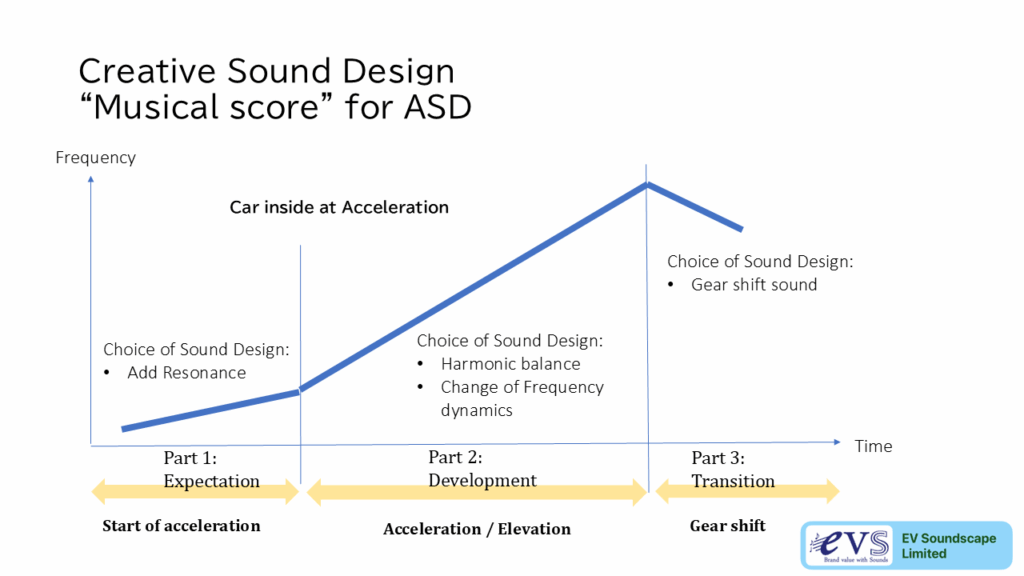If you grew up in the ’80s in Japan, you probably know Char Aznable—the “red comet” from Mobile Suit Gundam. Even if you are not Japanese, you may still share the same excitement through Star Wars. These shared cultural icons inspired me to present a unique approach to Active Sound Design (ASD).
Since I began studying ASD—the system that enables modification of engine sounds—I often felt constrained by how the automotive industry applied it. Most applications focused mainly on altering engine orders. From a sound designer’s perspective, however, what truly matters is the kind of sound effects the system can deliver, rather than just manipulating physical parameters.
Through my sound design work, I began to think of ASD not only as a technical system but as a “sound design recipe.” I reorganized what ASD can do into five creative elements:
- Change of frequency dynamics
- Harmonic balance A: Musical harmonic
- Harmonic balance B: Inharmonic (half orders)
- Addition of resonance
- Spaceship effect
To make these ideas resonate with listeners, I used the imagery of Char Aznable and the Jedi Master—figures whose sounds and presence could easily be shared and understood.
I presented this concept at conferences in Yokohama (JSAE, 2015) and San Francisco (Inter-Noise, 2015). To my surprise, the talk gained attention not only in Japan but also in Korea, where researchers at Hyundai Motor’s sound design research lab showed great interest. Looking back, I consider this my most memorable presentation between 2002 and 2024, as it marked a significant turning point in my career.
I would like to thank everyone who attended those sessions, as well as the Genesis (now Ansys Sound) team for their generous support.
Current Research: Musical Score for ASD
While I continue to enjoy exploring sound design, my current focus is the concept of a “Musical Score for ASD.”
As illustrated in the chart below (see figure), the idea is to map the driving experience to musical elements:
- Part 1: Expectation – Start of acceleration (add resonance)
- Part 2: Development – Acceleration/Elevation (harmonic balance and changes in frequency dynamics)
- Part 3: Transition – Gear shift (gear shift sound)
This “score” creates a narrative structure, where each stage of driving corresponds to a distinct musical gesture. By framing ASD in this way, I hope to inspire more creativity—not only in technical design but also in how people emotionally connect with vehicle sounds.

For me, sound design has always been more than engineering—it is about storytelling through sound. Whether inspired by anime heroes or cinematic masters, ASD can be a powerful medium for imagination. With concepts like the “sound design recipe” and the “musical score,” I hope to share new perspectives that will continue to expand the creative possibilities of sound design.

No responses yet